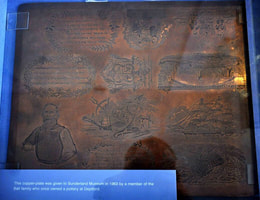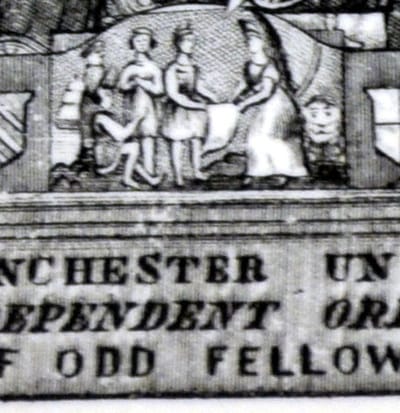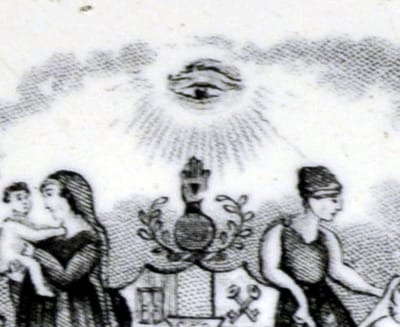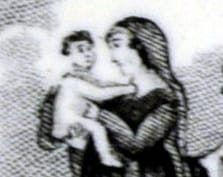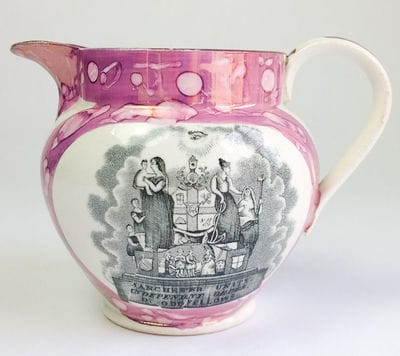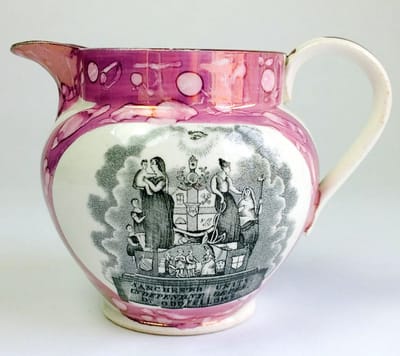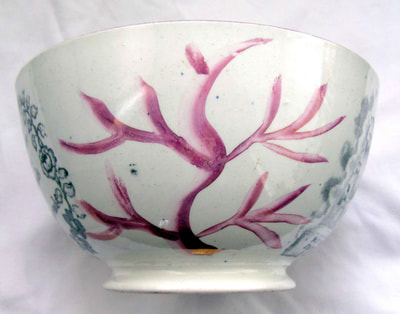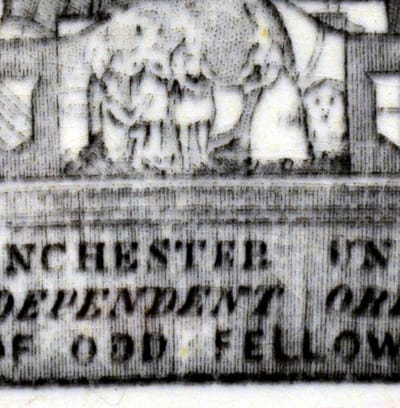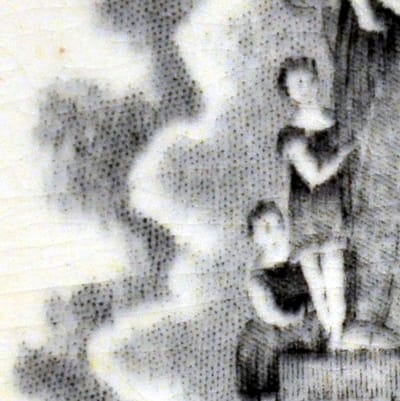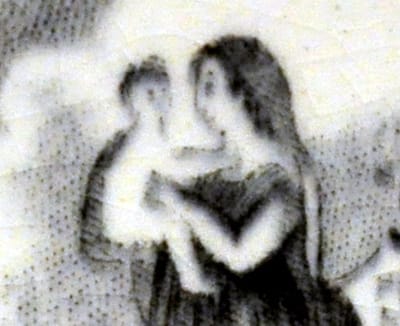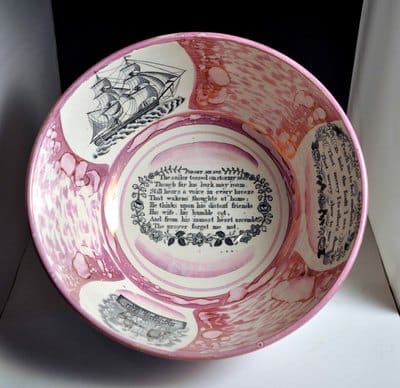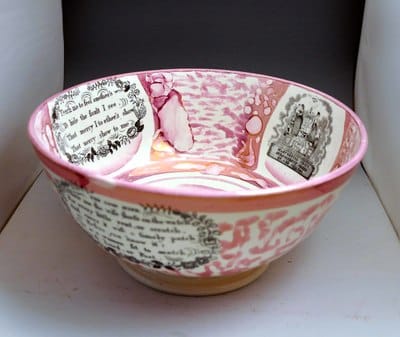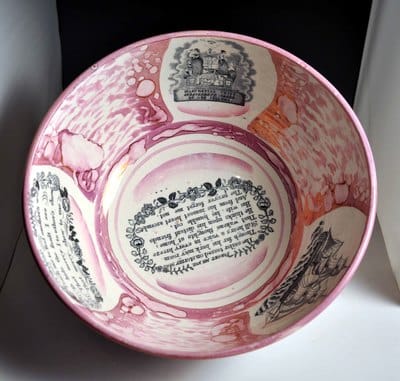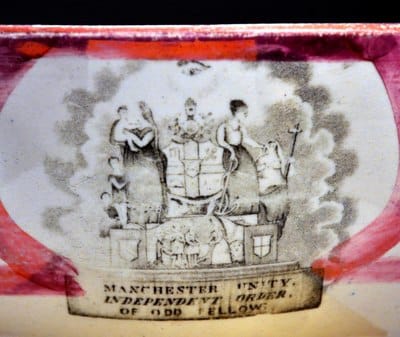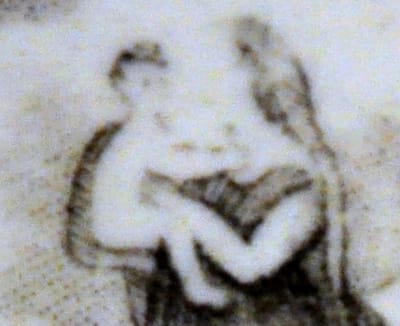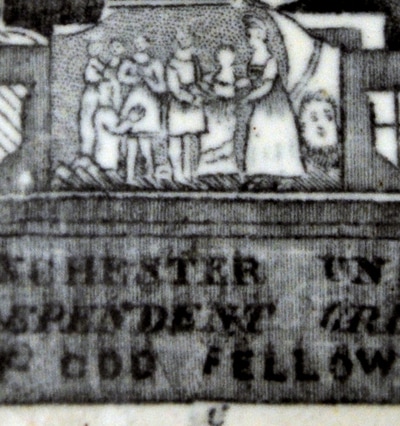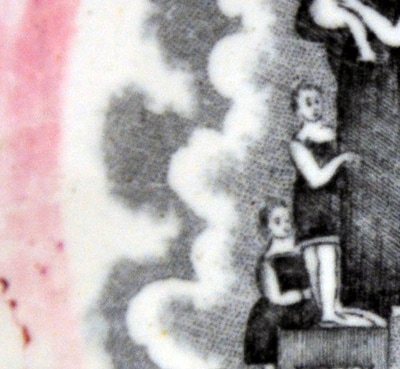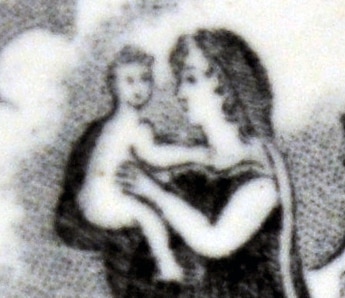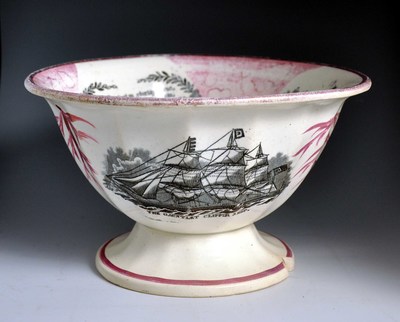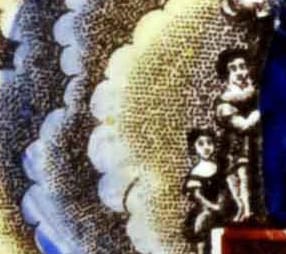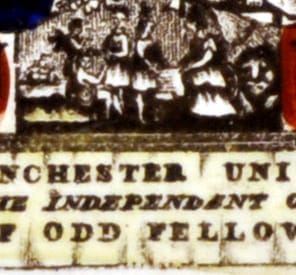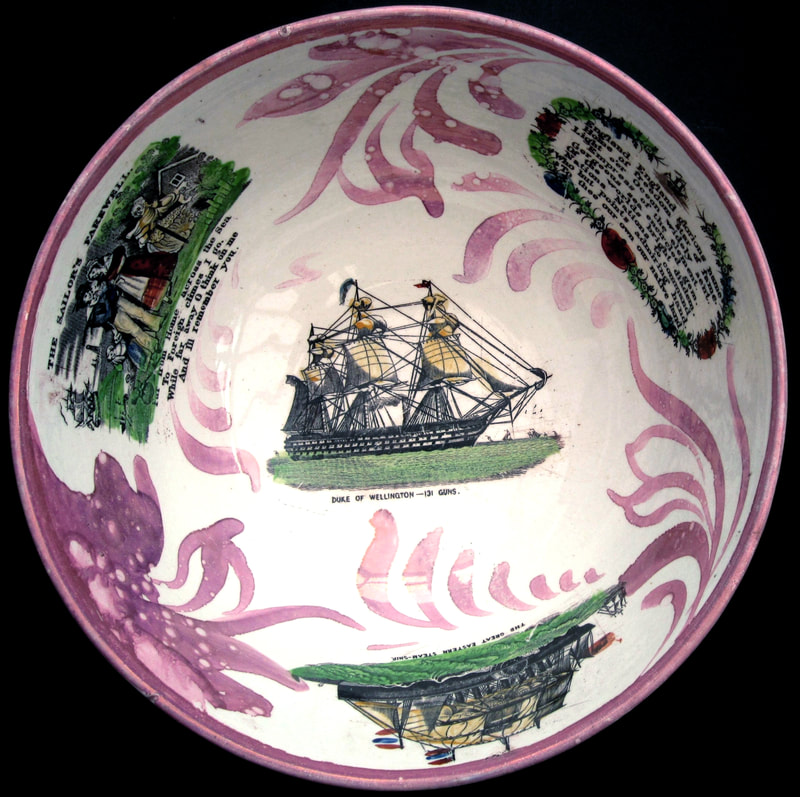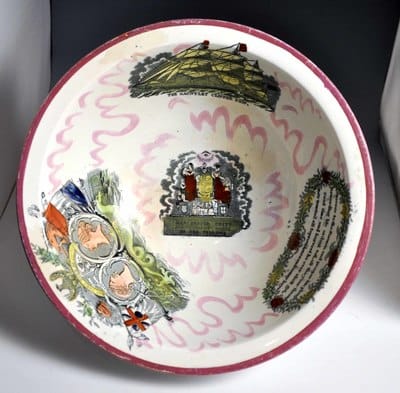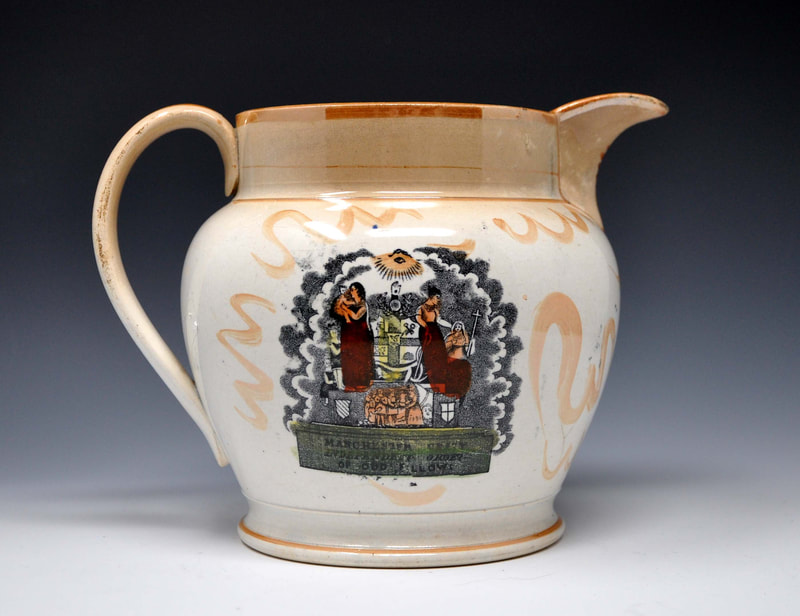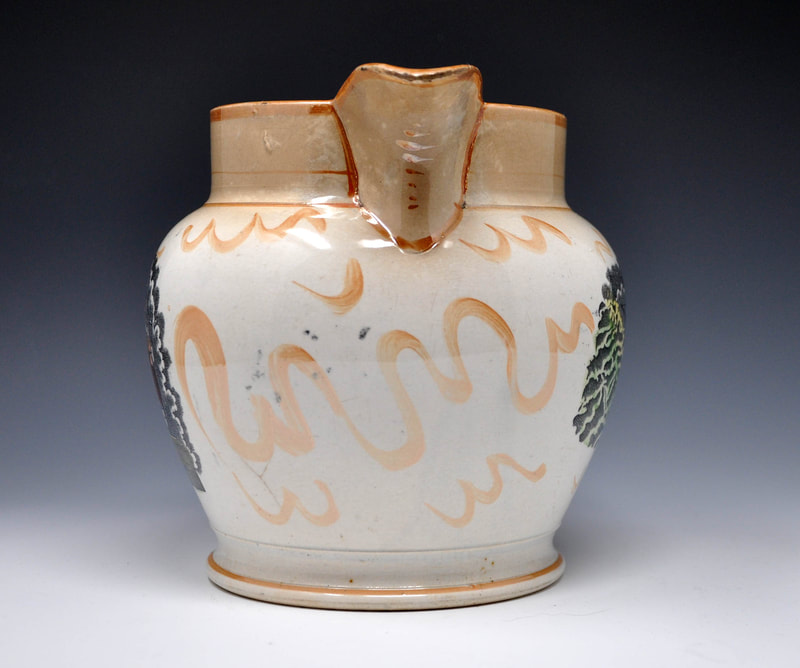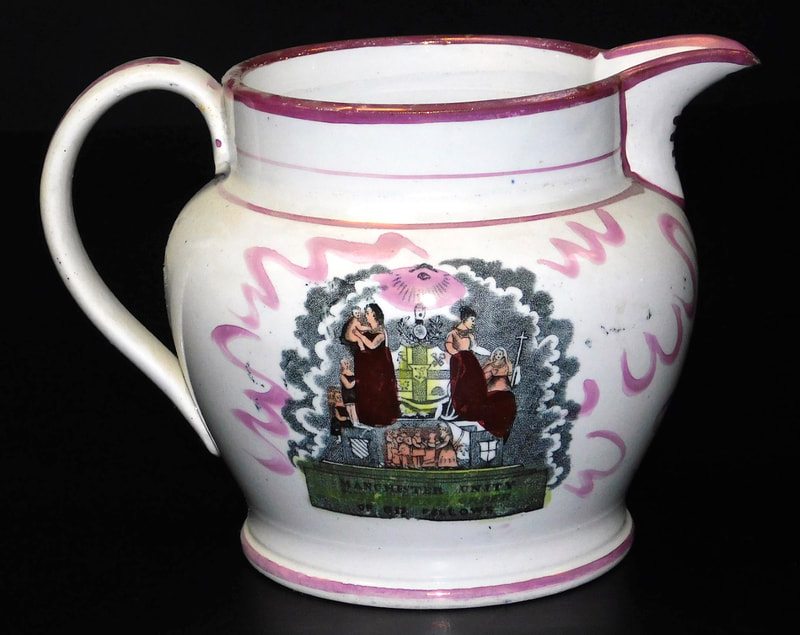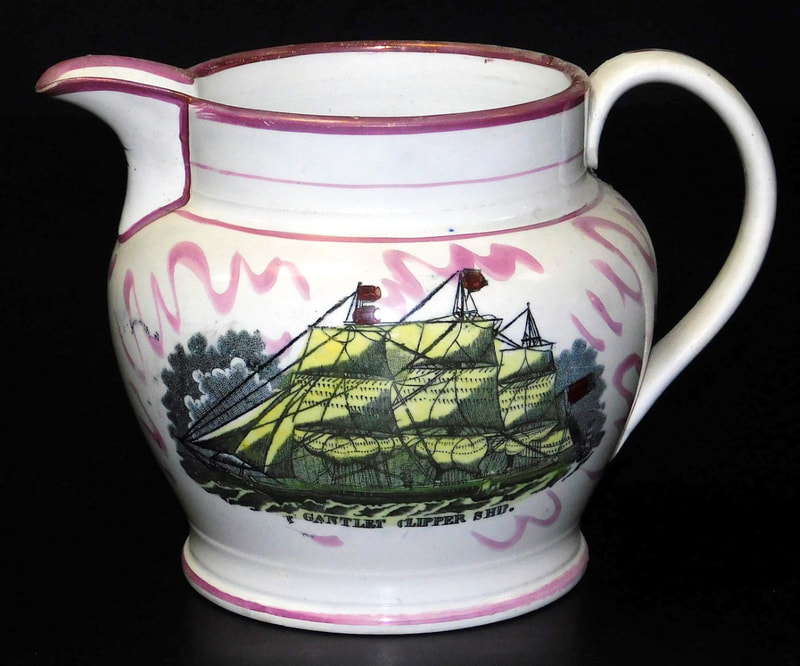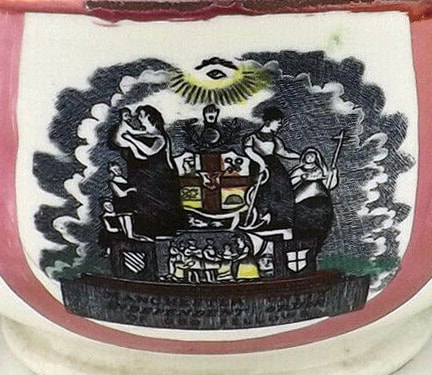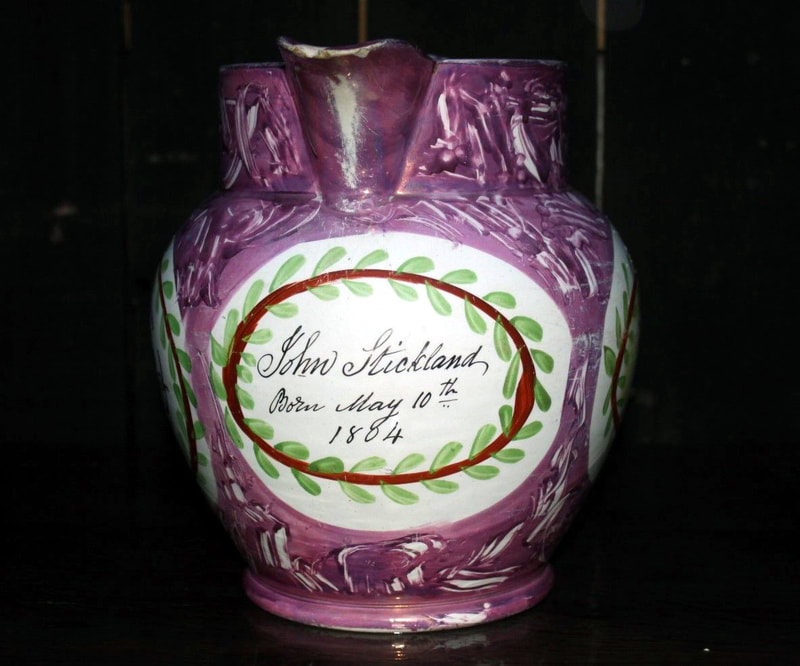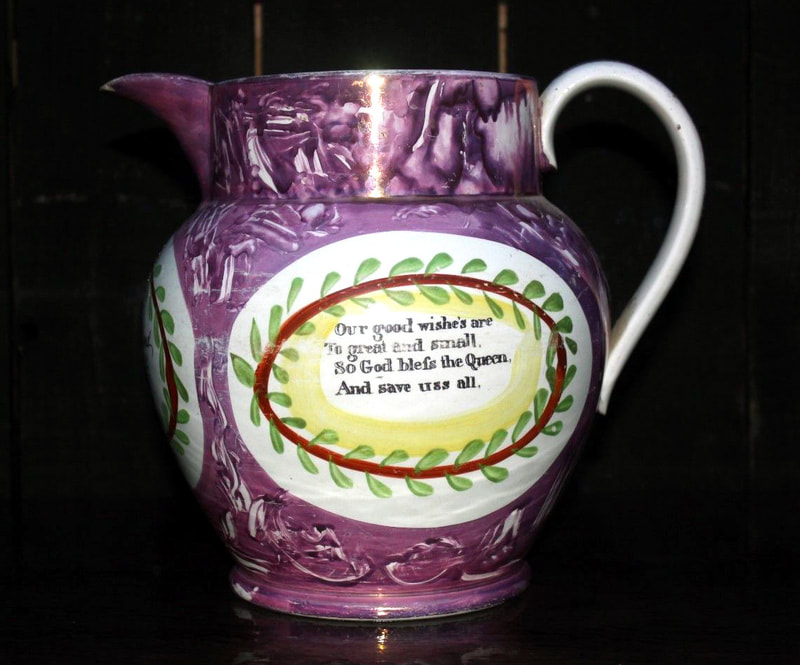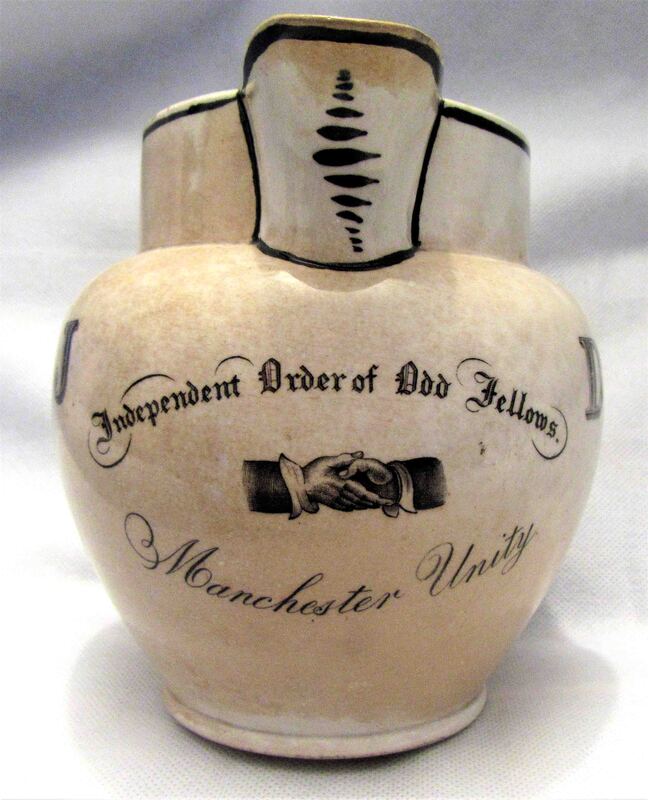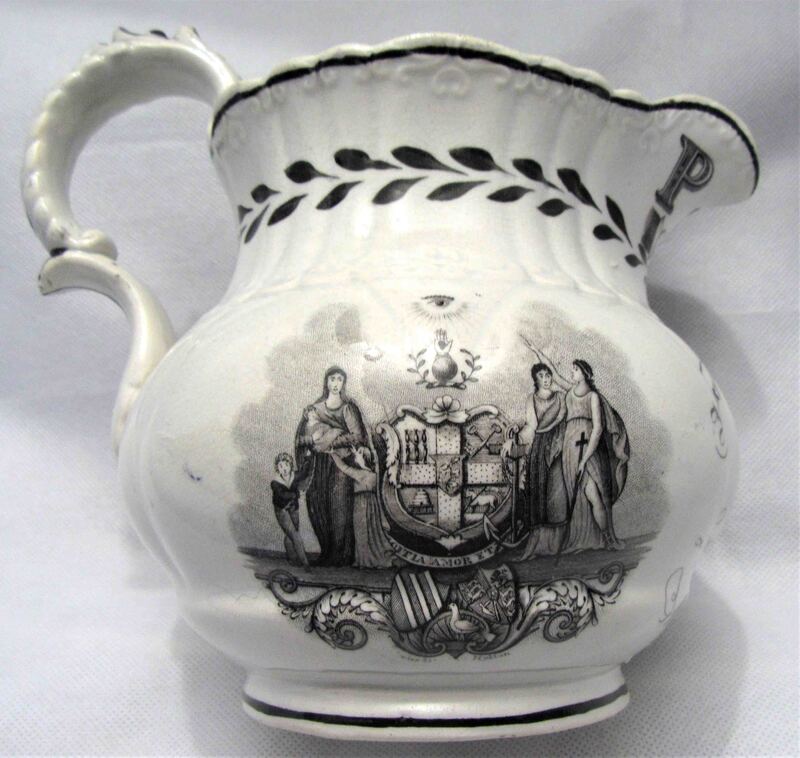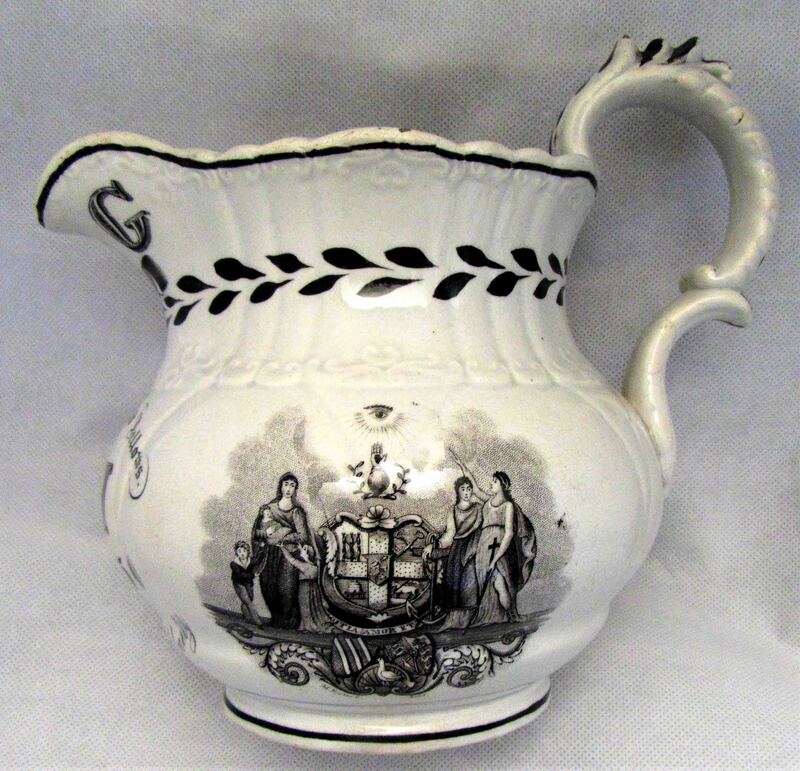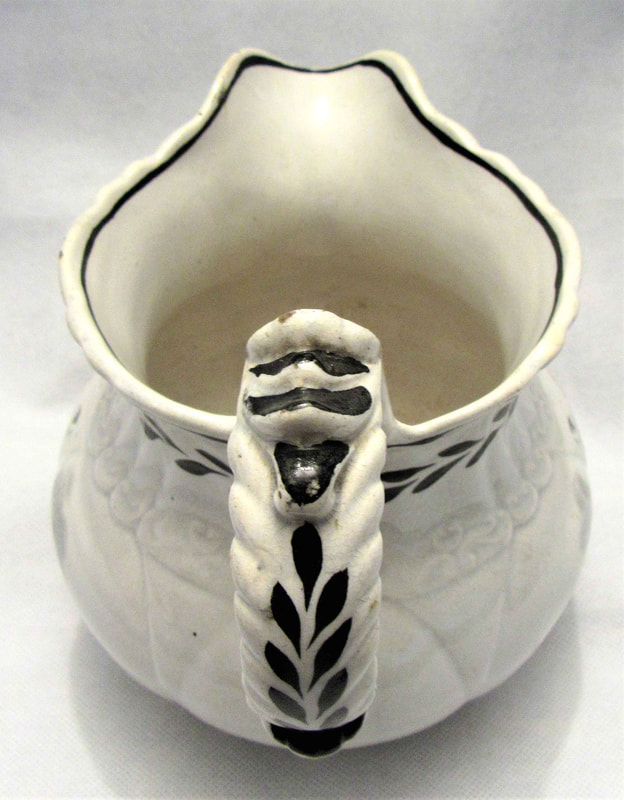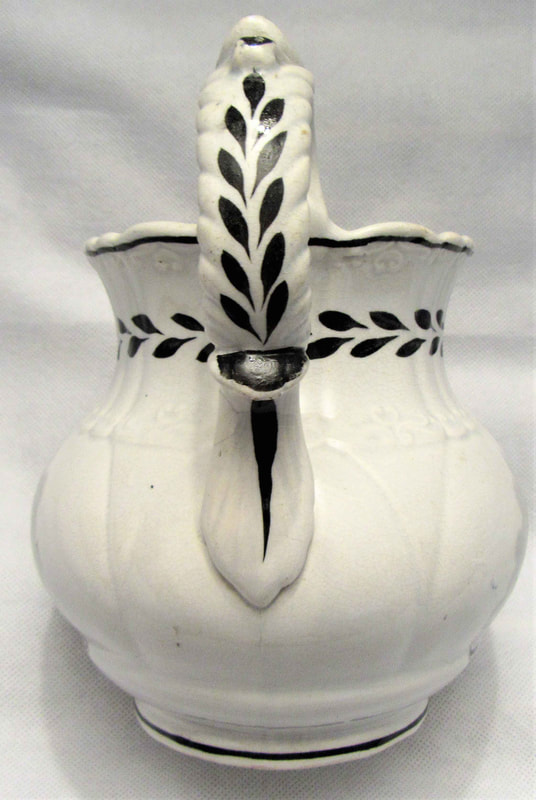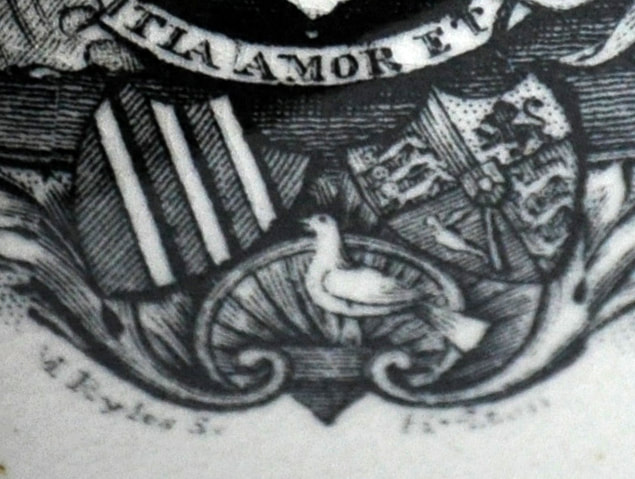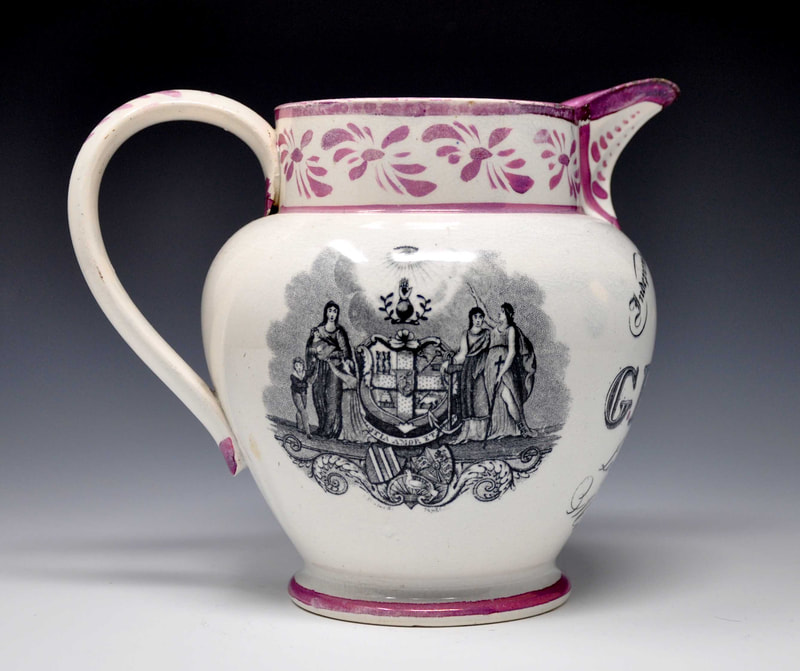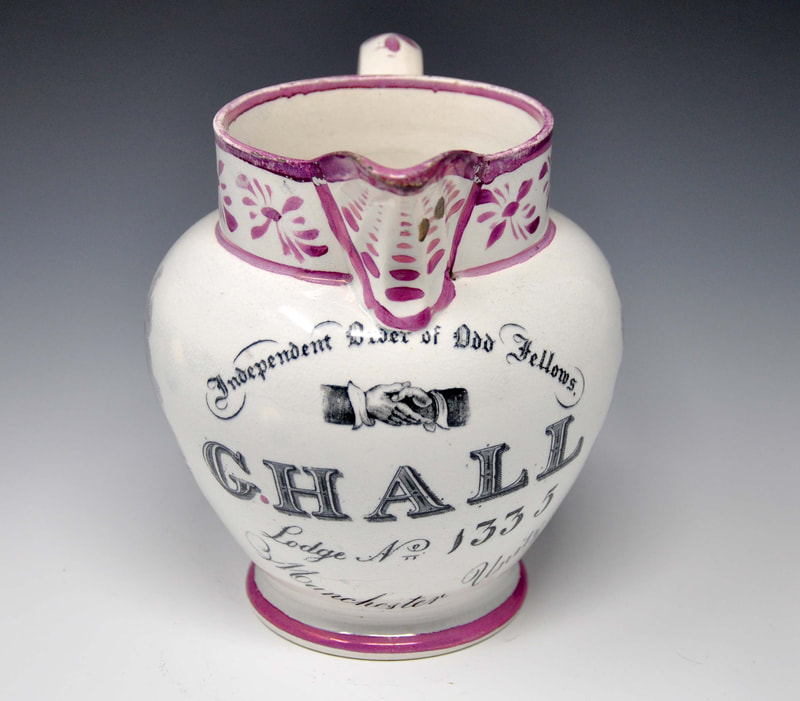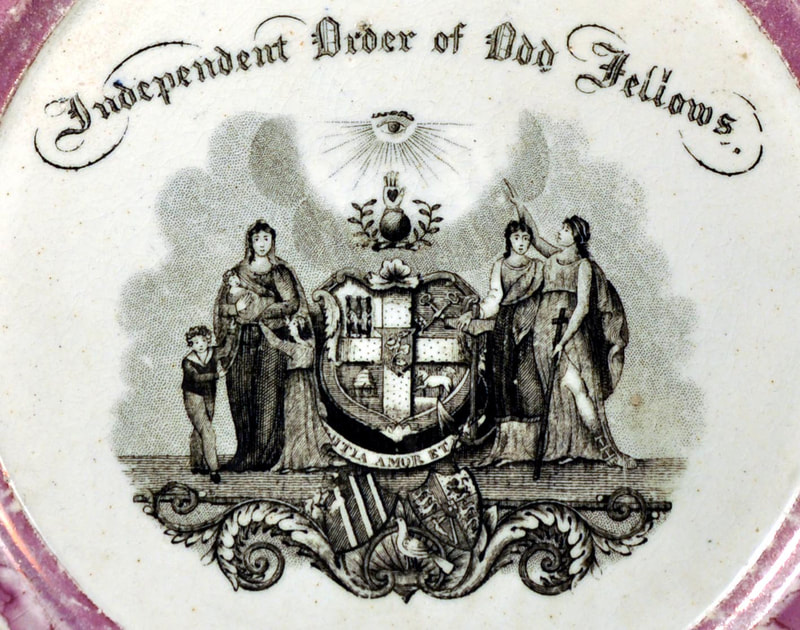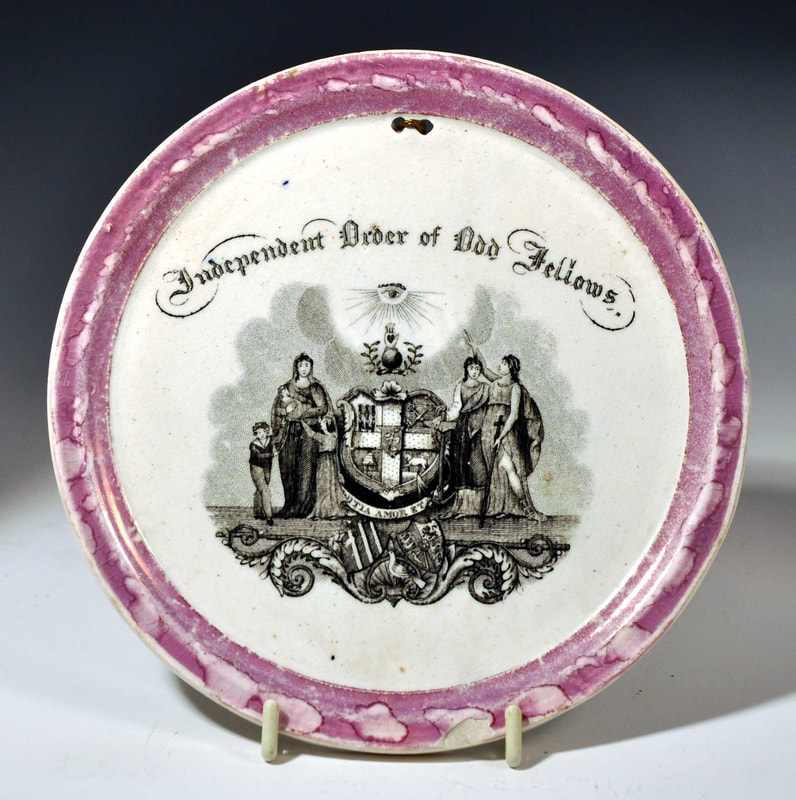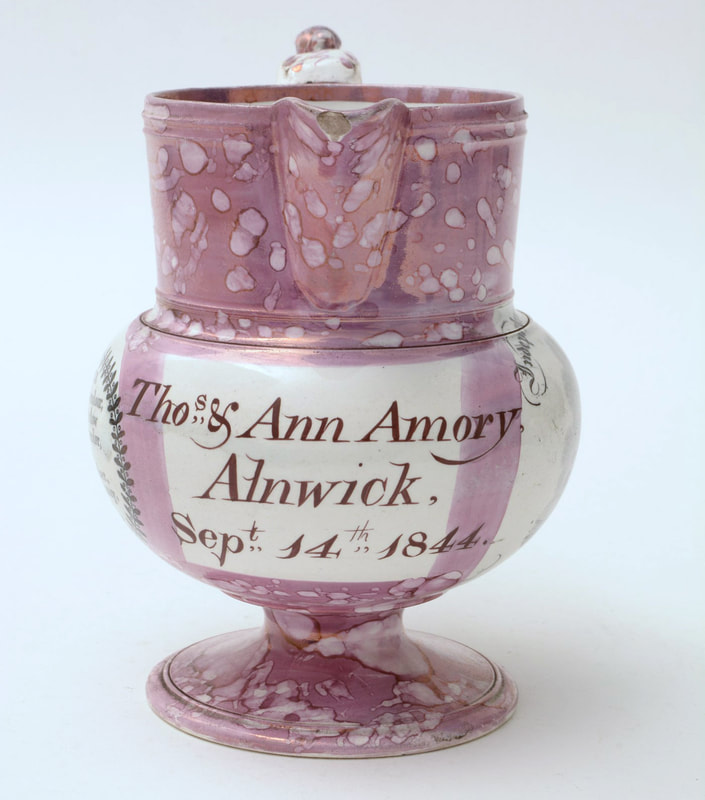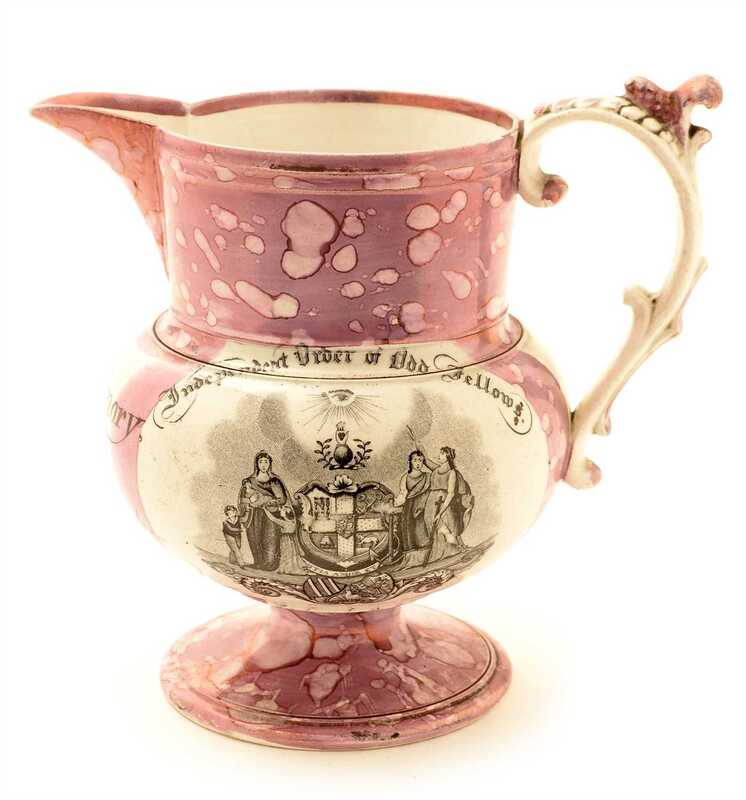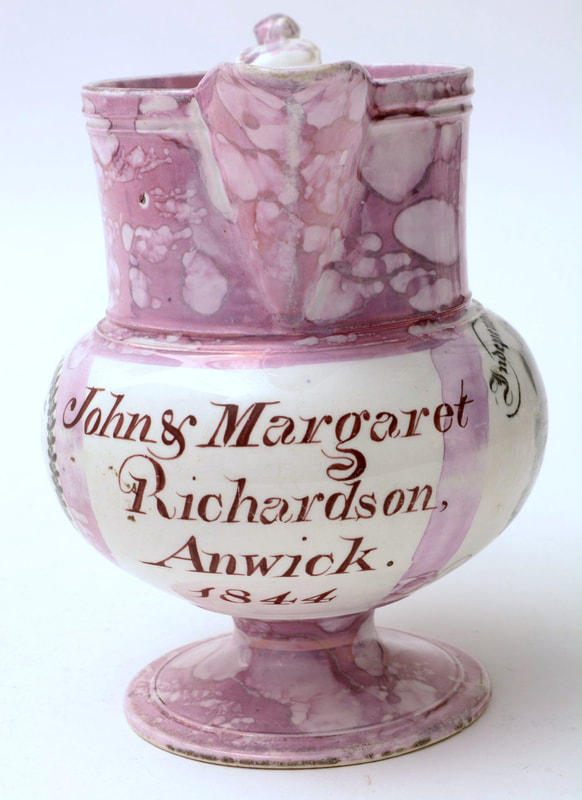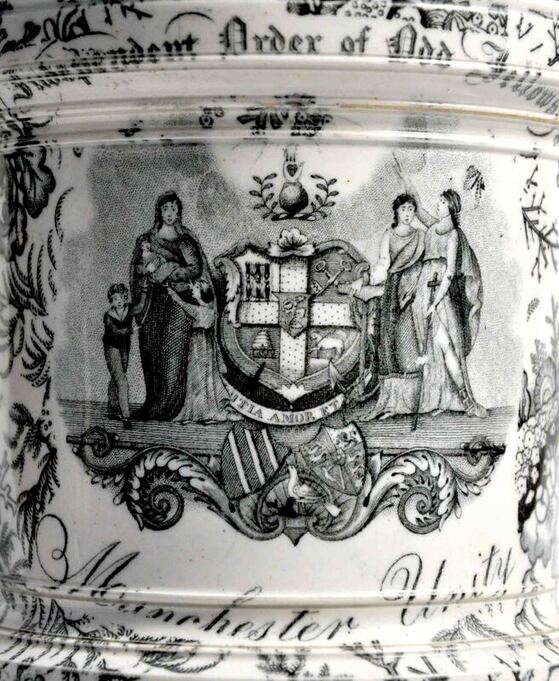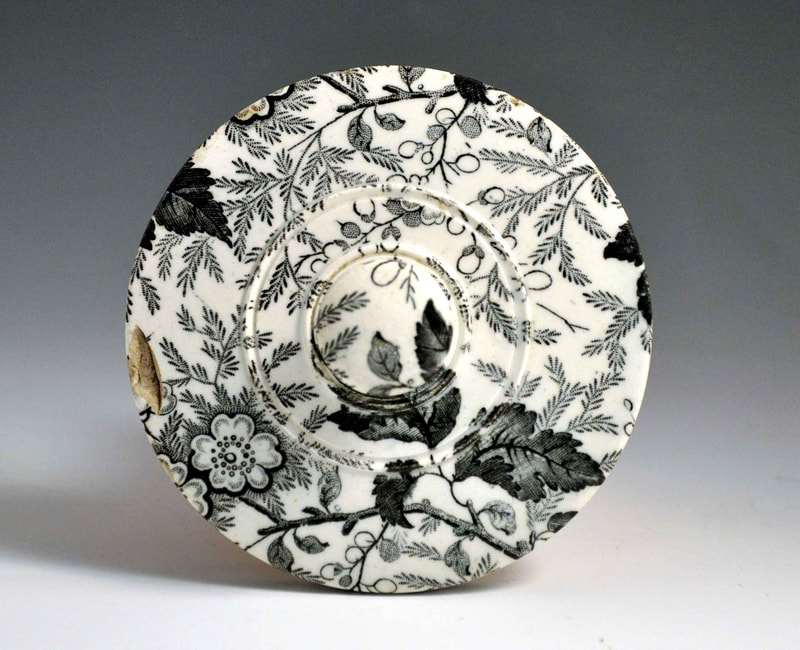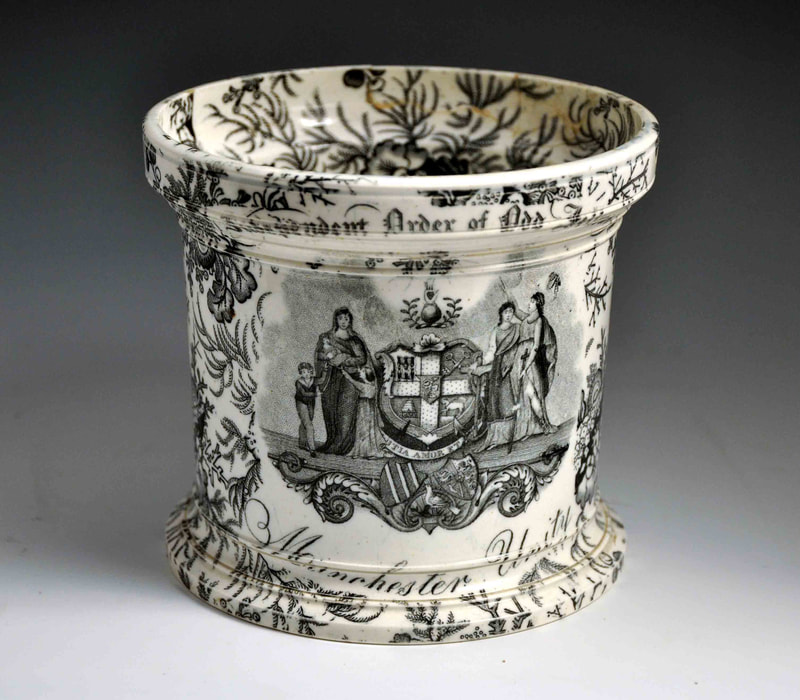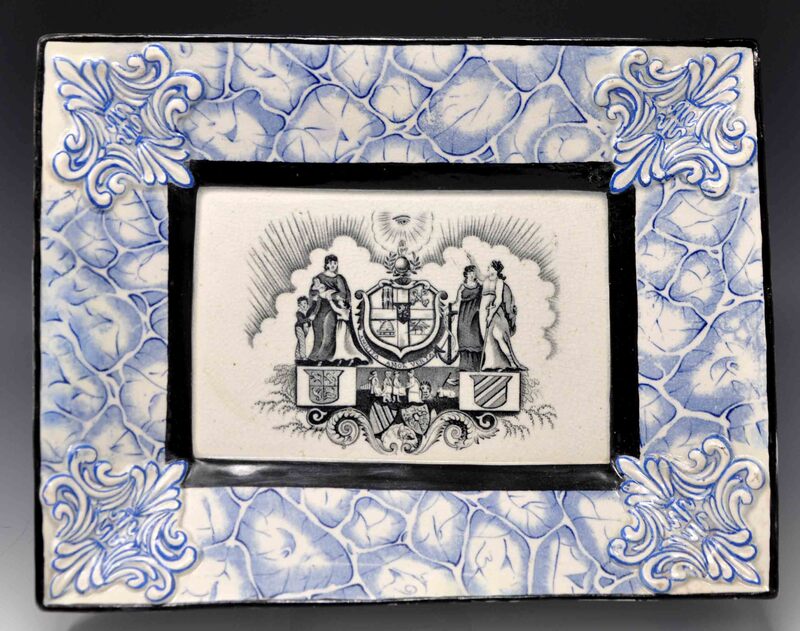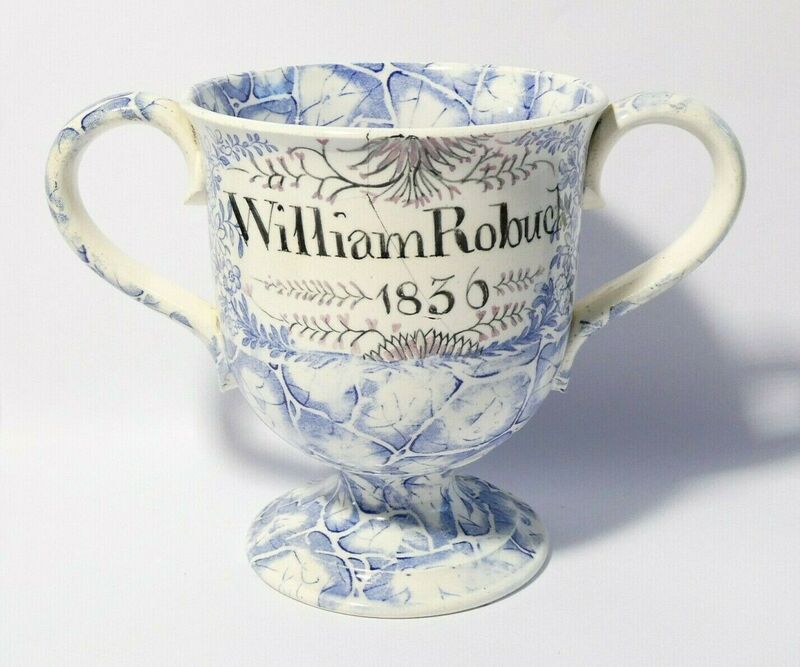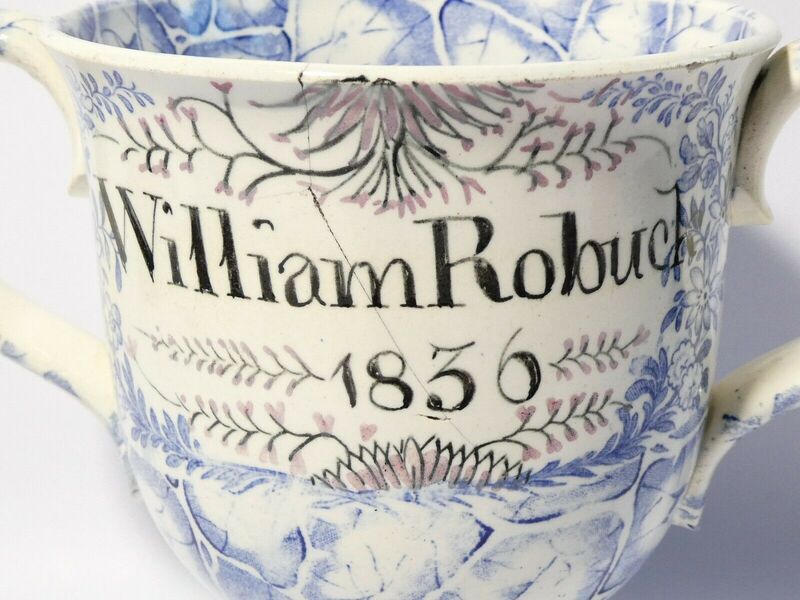Independent Order of Odd Fellows – Sunderland
|
The 'Garrison Pottery 4' plate appears to be an earlier impression from the copper plate in the Sunderland Museum & Winter Gardens, Tyne & Wear Archives & Museums collection, donated by the Ball family. The transfer plate appears to have been acquired by Scott from Dixon when the Garrison Pottery closed in 1865 and re-engraved in places. It was later acquired from Scott's by Ball's Deptford Pottery. Examples from each pottery shown below. |
Dixon, Phillips & Co, Garrison Pottery – 1
The plaque is likely 1840s. It is almost identical to the next transfer on this page, except the arm is shaded on the left figure representing Charity (see last detail).
Dixon, Phillips & Co, Garrison Pottery – 2
A small jug from c1850. The Charity's arm in the last detail is largely unshaded.
The first row of photos show the other transfer on the jug. The slop bowl beneath them, with distinctive lustre decoration, is marked 'Dixon Co' and appears to have a later degraded imprint from this transfer plate.
Dixon, Phillips & Co, Garrison Pottery – 3
A large unmarked punch bowl, c1850s. This could just be a later imprint of the transfer above. But there do appear to be differences, particularly in the cloud formation in the lower left detail. It is hard to be 100% certain because this transfer is applied to a concave surface, whereas the one above is convex.
A smaller bowl made in the final years of the Garrison Pottery before its closure in 1865. It has a degraded version of the transfer above.
Dixon, Phillips & Co, Garrison Pottery – 4
This pedestal bowl (c1860) is attributed to Garrison because it has a Gauntlet Clipper transfer that appears on marked 'Dixon Co' plaques. This version of the Oddfellows transfer is relatively crude. It appears that the transfer plate moved from Dixon's to Scott's when the Garrison Pottery closed in 1865.
Note the similar lustre decoration on the bowl to the marked 'Dixon Co' slop bowl in Garrison 2 above.
Another unmarked Dixon bowl with the transfer. The transfers on the inside of the bowl are decorated with over enamels.
Moore's Pottery
The first plaque is likely late 1850s. The second, is perhaps a little later (c1860).
This transfer also appears on Scott impressed bowls like the one below. Scott's supplied Moore's with plain earthenware for decoration during this period. Moore's decorated the wares with their own transfers, typical pink lustre and coloured enamels.
Scott's Pottery
This is the 'Garrison Pottery 4' version of the transfer from the copper plate in the Sunderland Museum. The plate was acquired by Scott's after the closure of the Garrison Pottery in 1865. It appears on a bowl with the Scott impress and on unmarked jugs. The jug with orange lustre was likely made c1870.
Ball's Deptford Pottery
This is the Garrison Pottery 4 / Scott's version of the transfer above, from the copper plate in the Sunderland Museum, in its final incarnation at Ball's Pottery.
On the mug below, typically, the enamelling is crudely applied. Ball's made these items into the 20th century.
Independent Order of Odd Fellows – Tyneside
Attributed to Robert Maling, Ouseburn Bridge Pottery
Despite the inscribed date of 1804, this jug was likely made in the mid 1830s, perhaps as a 30th birthday present.
Attributed to a Tyneside Pottery
Engraved by M Ryles, Hylton
This transfer has the printed mark 'M Ryles Sc' [Sculpt] 'Hylton'. Thanks to Norman Lowe for the following information.
Michael Ryles was christened in 1815 at Burslem in the potteries. In 1832, he married Catherine Burn in South Shields and they had several children born in a variety of places, indicating that the family moved around: Sarah was christened in 1835 in Sunderland; Thomas in 1838 in Monkwearmouth (Michael possibly working for a Southwick pottery at that time); and Elizabeth in 1840 in Seaham. By the 1841 census the family was living in South Hylton, but the following year Michael junior was christened at Tynemouth, and in the 1851 census they were resident at the Baths, Low Lights, Tynemouth. In 1841 Michael's occupation is given as engraver; in 1851 as engraver in pottery. He died in 1858.
So the 'Hylton' printed mark indicates a date close to 1841 for the transfer. All this could mean that Michael produced designs for Seaham, Scott/Moore and Low Lights as well as Dawson! See the next section for another engraving likely by Ryles from his time in Low Lights, North Shields.
Michael Ryles was christened in 1815 at Burslem in the potteries. In 1832, he married Catherine Burn in South Shields and they had several children born in a variety of places, indicating that the family moved around: Sarah was christened in 1835 in Sunderland; Thomas in 1838 in Monkwearmouth (Michael possibly working for a Southwick pottery at that time); and Elizabeth in 1840 in Seaham. By the 1841 census the family was living in South Hylton, but the following year Michael junior was christened at Tynemouth, and in the 1851 census they were resident at the Baths, Low Lights, Tynemouth. In 1841 Michael's occupation is given as engraver; in 1851 as engraver in pottery. He died in 1858.
So the 'Hylton' printed mark indicates a date close to 1841 for the transfer. All this could mean that Michael produced designs for Seaham, Scott/Moore and Low Lights as well as Dawson! See the next section for another engraving likely by Ryles from his time in Low Lights, North Shields.
The Sunderland Museum (Sunderland Museum & Winter Gardens, Tyne & Wear Archives & Museums) has an example dated 1841, which it attributes to Dawson. However, I now think that is unlikely for the reasons set out below.
Below is a moulded jug with the transfer, and two different sets of initials. It appears that the pottery had a copper plate with an alphabet of upper case letters that could be collaged onto jugs and mugs as required. Similarly, they had a set of numbers, so that the Masonic Lodge Number could be entered in the appropriate space. See another pink lustre example below.
Ian Holmes has noted the similarity of decoration to two mugs with flower transfers coupled with Grace Darling (left below) and a view of Grey Street, Newcastle, with the Theatre Royal (right below). The Newcastle transfer makes it much more likely, in my view, that these items were made by a Tyneside pottery. It seems possible that Ryles engraved the copper plate in 1841 in South Hylton, and took it with him that year when he moved to Low Lights in North Shields, selling it on to a Tyneside pottery.
Below, a pink-lustre jug with the transfer on either side. The decoration on the handle is similar to the moulded jug above. The lustre rim is similar to those seen on North Shields Examples.
Finally a plaque with the transfer, which is of similar form to those attributed to Robert Maling. It does not look like anything known to have been made by Dawson.
Attributed to Carr & Patton, North Shields
Although unmarked, this plaque is very similar in shape and decoration to plaques with the C, C & Co impress made in the 1830s. The transfer is similar to the Dawson-attributed items at the top of this page, but lacks Michael Ryles' signature (the engraver). Michael Ryles is, however, known to have resided at the Baths, Low Lights, Tynemouth between 1842 and 1851. The plaque is attributed to the above partnership, 1838–1846 on the basis of the dated jugs below.
This bachelor set has the same transfer but with the words 'Manchester Unity' beneath. The other transfers, eg the 'Young Cottagers', are typical of North Shields.
Independent Order of Odd Fellows – further afield
Unidentified pottery, possibly Yorkshire
Below is a very heavy slab of a plaque with a similar transfer,
The loving cup below has the same blue marbled background. Norman Lowe writes 'I have looked for William Robuck and can find no one of that name born between 1780 and 1836 in Northumberland and Durham, but several in Yorkshire, none of whom are recorded as living in the NE subsequently'. So the items were perhaps made in Yorkshire.
